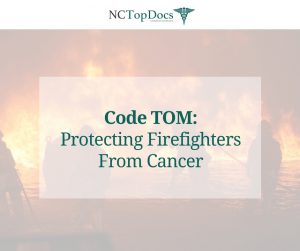
Firefighters are aware of how dangerous it is to enter burning buildings. With the intense heat, smoke, and raging flames, every day on the job is a new experience with danger lurking around every corner. But how often do firefighters know that there are unseen dangers of their profession? In 2010, researchers from the National Institute for Occupational Safety and Health (NIOSH), launched a multi-year study to examine whether firefighters have a higher risk of cancer and other causes of death due to job exposures.
The study included around 30,000 career firefighters and when compared to the number of expected cancers in the US population rate, firefighters were 9% more likely to be diagnosed with cancer and 14% more likely to suffer from a cancer-related death. This increase in risk for cancer is due to the exposure of cancer-linked chemicals like asbestos, formaldehyde, and benzene while on duty.
With this knowledge in-hand and first hand experience of losing a firefighter to melanoma, a community program from the Levine Cancer Institute in Charlotte, NC is trying to fight back. The program, Code TOM which was named after a firefighter who passed away from melanoma in 2013 also stands for Taking On Melanoma. This program brings head and neck cancer screenings to fire stations around the state, in addition to hosting seminars for active firefighters in North Carolina. Since its creation in 2016, Code TOM has reached over 3,000 firefighters.
To learn more about this program, please click here. If you are a firefighter concerned about your exposure to cancer-linked chemicals, be sure to visit www.NCTopDocs.com to search for a reviewed and approved healthcare provider in your area.

